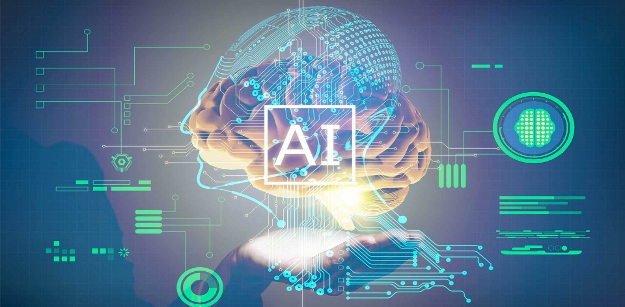If we look around the internet, you will find more and more stories, posts and articles popping up about Artificial Intelligence. If we just look into the case of Microsoft, AI took up mobility as one of the tasks on top priority. This was done at the same time when the company acquired two of the AI based startups named SwiftKey and Maluuba and established a research group formally for AI.


In the year 2016, Google indicated a shift from mobile-first to AI-first world. With all these things going on around, there always came up a question about what AI is in real sense all about?
According to market.us, The Artificial Intelligence Market is projected to grow exponentially over the next decade, and it is expected to grow around USD 2,967.42 billion by 2032 from USD 94.5 billion in 2021 at a 36.8% CAGR.
There are people who believe that AI is something that focuses on robotics and it will take up the workforce over time. With some of the movies depicting AI as something which develop human intelligence and feelings and messing up with things, it has been looked upon with scepticism. For many it has turned out to the villain in ‘real’ sense than in ‘reel’ sense.
The AI program of Facebook, one of the kinds of developments in AI, which has created a language on its own now, seems to be less of something unbelievable. The demand of artificial intelligence development solutions are said to be on the rise too.
In actual sense, AI is not something that you should be staying away from or being afraid of. It is not all about robotics too but something more than that. So let’s see what artificial intelligence is all about and track down the myths that surround it.
What is artificial Intelligence?
It was in the year 1955 that for the first time the term Artificial Intelligence was used by John McCarthy, a computer science professor, at Dartmouth College conference as a part of his subject. With time computer technology evolved, the science behind AI and the robotics too.
The machine learning workshop was hosted for the first time in 1966 in Edinburg. Then again it came up in the light at Washington D.C in 1969 at the first International Joint Conference on Artificial Intelligence.
During the early 1970s there was an emergence of natural language processing by showcasing the ability of computers to understand sentences in English. Just after this, within short period of time, a robot which can be used to assemble models using vision was developed by the Assembly Robotics group at Edinburgh University.
Things changed for AI in 1997 when a major role was played by autonomous robotics for the successful landing on Mars by NASA. At the same time the World Wide Web got expanded by making use of AI-based programs.
If we look at the current scenario twenty years later, AI is all set to grow, grow more. It is expected to make exponential growth in coming two years. The figure which was 1 billion in 2016 is expected to reach 44.5 billion in 2025.
AI in actual sense comprises of six important aspects: smart robotics, natural language, computer vision, autonomous vehicles, machine learning and virtual agents. Some of the companies have classified these six categories into natural language processing, machine learning and computer vision along with knowledge representation, expert systems and audio processing.
What is machine learning?
These six areas are focused by machine learning today. Again, machine learning is a term which is used now more often with and in place for AI. The year 2016 saw the largest investment in this sector.
Machine learning is said something like AI which is said to behave like humans. AI is said to be a key enabler who is said to offer services like guessing the user needs based on the location, offering weather forecasting, offering services based on what the user is doing, etc.
Examples of AI
Machine learning can be explained well with the example of IBM Watson. It received all kinds of attention when the computer managed to win against two other best ones in the game show of “Jeopardy! “
Machines are in real sense not smart at all and they are just programmed by humans to work. As per chief information officer at Insight, Mike Guggemos, “Machines aren’t thinking. People write scripts that tell chatbots what to do.” “It’s basic computing”.
“Today’s machine learning uses analytic models and algorithms that learn from data, finding hidden insights without being explicitly programmed where to look” is what IBM says.
We can easily find such kind of examples in our day-to-day lives. Have you recently talked with someone on the chat when looking for some service or product? There are high chances that you came across an AI based chat which finds information based on your question by using an AI powered algorithm. In short, you are accessing analytics and algorithms when you are giving commands to Google Home or Alexa or asking questions to Cortana or Siri. Again, AI is considered as the base or foundation of big data analytics, security surveillance and accurate predictive technology.
Getting more deep into deep learning
There are many who believe that these examples are not the real representation of the technology. Such kind of people believes that the right kind of AI should come with machine learning on its own. Many people fear this one idea itself.
Such kind of AI is said to be as deep learning and this is something considered as the subset of machine learning. It is all about making your computers to learn by offering examples. There are two important things which are needed to make deep learning effective and they are significant amount of computing power and large amount of data.
Deep learning can be put to use by offering large amount of big data and such amount of data can be used to predict customer buying behaviours and to analyse large amounts of transactions. One of the effective examples of such deep learning is speech and hearing translation. It can also help with product deliveries which are done using drones.
Even though people have great fears inside them about how AI can take upon our lives, there are a number of benefits which it offers above the expected harm.
Benefits of artificial intelligence
One of the main aims behind using artificial intelligence by combining machine learning was to take care of the repetitive manual tasks and free resources to work on more crucial projects. One of the examples of artificial intelligence is about automated data analytics which helps the people to save a lot of working hours that can be used for innovative tasks. Another one is to think about a scenario where the automated prescriptions to reorder medicines can be used, which can thereby free pharmacists from talking to the patients and filling up the prescriptions every time.
Across different industries, artificial intelligence is capable to offer different business benefits. Some of them have been explained below:
- Personalized experiences
- Efficiency in maintenance and production
- Reduced costs
- Better decision-making power
- Targeted sales and marketing
Currently, AI is made use to improve marketing and sales efforts, credit risk scoring, fraud detection and customer service.
Wrapping up
If you look at AI, it is a fact that it will eliminate a number of jobs and automate them like some processes in manufacturing, some works of factory workers, etc. but, on the other side, it will help to create some new ones too. Every kind of industrial revolution has brought an end to certain kind of work profiles and given birth to new ones and things will not be different with AI.
Smart cars with AI will be the future of common man’s life and with right measures taken using AI, chances are more that traffic will be improved and the number of accidents taking place will be reduced drastically. Misdiagnosis of diseases will come down, the time taken to get medical test results will get low and all these will help to promote better health. For companies especially in the eCommerce sector, they will have a clear and better idea about what customers expect from them and thereby save time in selling products that are in demand in the market.



